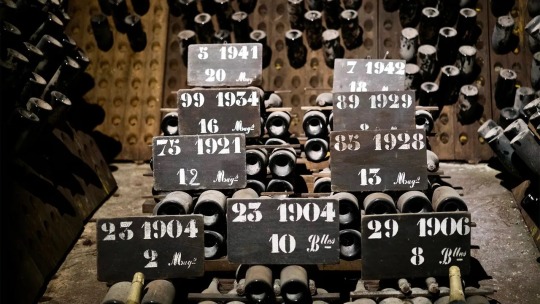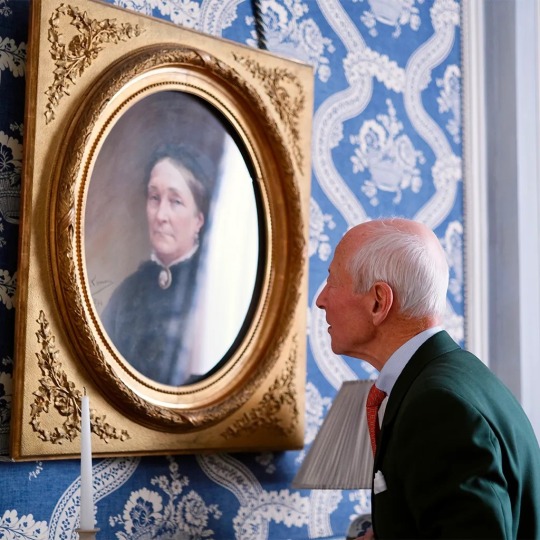#interfoto
Text

220830
·
#photographers on tumblr#original photographers#concept photography#architecture#interfoto#josch schlegel
379 notes
·
View notes
Photo

boule site in small town, germany // 12-2020
____________________________________
finissage?
today, after exactly one decade, my ' traces of human life ' -project felt accomplished to me – from now on it could live on as a snapshot of its 10th anniversary to showcase my main photographic approach, time will tell if i change my mind on this point… at least social interaction will nonetheless continue.
fact is: i set up my new blog '@interfoto' which starts in this second and could be home for a potential follow-up project of mine. happy to see you there! my side blog ‘@waidwund-reblogs’ remains intact with open end.
thank you so much for your support and loyalty!
– cheers, Josch
© 2020 waidwund-photo
#photographers on tumblr#original phtotographers#minimalism#kleinstadtangst#waidwund photo#josch schlegel#traces of human life#thank you#10th anniversary
64 notes
·
View notes
Text
selling hq pics from (all are $0.50 per pic)
getty images (no contour pics, videos included, higher than 2048px)
newscom
mida.ansa.it (has access to epa mostly)
pixsell.hr
mega agency
gtres
startraks
reuters
tpg
ipa
alamy
everett collection
atlanticopress.pt (only very recent pics or recently uploaded pics)
trunk archive mq (1000-1200px, no hidden pics)
interfoto mq (1000px)
1 note
·
View note
Text
On this day in Wikipedia: Tuesday, 1st August
Welcome, Benvenuta, Velkommen, 你好 🤗
What does @Wikipedia say about 1st August through the years 🏛️📜🗓️?

1st August 2021 🗓️ : Death - Jerry Ziesmer
Jerry Ziesmer, American assistant director, production manager and occasional actor (b. 1939)
"Jerry Ziesmer (May 31, 1939 – August 1, 2021) was an American assistant director, production manager and occasional actor. He is best known for his role as Jerry in the 1979 film Apocalypse Now in which he delivers the infamous line "terminate with extreme prejudice". His character is suspected to..."
1st August 2017 🗓️ : Event - Suicide attack
A suicide attack on a mosque in Herat, Afghanistan kills 20 people.
"A suicide attack is any violent attack, usually entailing attackers detonating an explosive, where any attackers have accepted their own death as a direct result of the attacking method used. Suicide attacks have occurred throughout history, often as part of a military campaign (as with the Japanese..."

Image licensed under CC BY-SA 2.0? by Robert on Flickr
1st August 2013 🗓️ : Death - Toby Saks
Toby Saks, American cellist and educator (b. 1942)
"Toby Saks (January 8, 1942 – August 1, 2013) was an American cellist, the founder of the Seattle Chamber Music Society and a member of the New York Philharmonic...."
1st August 1973 🗓️ : Death - Gian Francesco Malipiero
Gian Francesco Malipiero, Italian composer and educator (b. 1882)
"Gian Francesco Malipiero (Italian pronunciation: [ˈdʒaɱ franˈtʃesko maliˈpjɛːro]; 18 March 1882 – 1 August 1973) was an Italian composer, musicologist, music teacher and editor...."

Image licensed under CC BY-SA 4.0? by
Interfoto
1st August 1922 🗓️ : Birth - Arthur Hill (Canadian actor)
Arthur Hill, Canadian-American actor (d. 2006)
"Arthur Edward Spence Hill (1 August 1922 – 22 October 2006) was a Canadian actor. He was known in British and American theatre, film and television...."

Image by ABC Television
1st August 1819 🗓️ : Birth - Herman Melville
Herman Melville, American novelist, short story writer, and poet (d. 1891)
"Herman Melville (born Melvill; August 1, 1819 – September 28, 1891) was an American novelist, short story writer, and poet of the American Renaissance period. Among his best-known works are Moby-Dick (1851); Typee (1846), a romanticized account of his experiences in Polynesia; and Billy Budd,..."

Image by Joseph Oriel Eaton
1st August 🗓️ : Holiday - Statehood Day (Colorado)
"A state of the United States is one of the 50 constituent entities that shares its sovereignty with the federal government. Americans are citizens of both the federal republic and of the state in which they reside, due to the shared sovereignty between each state and the federal government...."

Image licensed under CC BY-SA 4.0? by Gigillo83, original of 70.29.208.129
0 notes
Photo

Brasileirão 1988 – Grêmio 1×0 Inter
Foto: Placar
#brasileirão 1988#1988#grenal brasileirão#grenal beira rio#Grenal Brasileirão Beira Rio#Grenal#ademir maria
0 notes
Photo


Cave and Basin National Historic Site, Sulphur Mountain, Banff National Park, Alberta
© Interfoto/DanitaDelimont.com
Today on Bing- April 26, 2023
Cave and Basin National Historic Site, Sulphur Mountain, Banff National Park, Alberta
The origin of Canada's national parks | EN-CA, EN-CN, EN-GB, EN-US
0 notes
Text

Image credit: Mariana Mikhailova/Getty Images
The Little-Known History of Champagne
While women were barred from owning businesses in 19th Century France, three widows, who were exempt from the rule, created some of Champagne's most lauded empires.
��� By Lily Radziemski | 2nd March 2023
On the outskirts of the north-eastern French city of Reims, winding roads converge near a gated chateau. Cars line a roundabout enclosed by sprawling fields. The air is still, and it's calm. The real action is happening almost 20m underground.
Carving through this underworld are more than 200km of cellars, with millions of Champagne bottles lining chalky rock walls, unlabelled and marked with the words "I was here" by tourists in the dust covering them. Some are upside-down, in chains, glowing in the dim light of the cellars against the backdrop of tunnels that seemingly lead to nowhere. Others are stacked in small caves guarded by wrought iron gates. This is ground zero of the world's Champagne market.
And, historically in the caves, widows ruled.
Some of the biggest innovations of Champagne came down to the ingenuity of several women. In the 19th Century, the Napoleonic Code restricted women from owning businesses in France without permission from a husband or father. However, widows were exempt from the rule, creating a loophole for Barbe-Nicole Clicquot-Ponsardin, Louise Pommery and Lily Bollinger – among others – to turn vineyards into empires and ultimately transform the Champagne industry, permanently changing how it's made and marketed.
In 1798, Barbe-Nicole Ponsardin married François Clicquot, who then ran his family's small textile and wine business, originally called Clicquot-Muiron et Fils in Reims. It turned into a financial disaster. When Clicquot died in 1805, leaving her widowed at 27 years old, she made the unconventional choice to take over the company.
"It was a very unusual decision for a woman of her class," said Tilar Mazzeo, cultural historian and author of The Widow Clicquot. "It would have been extremely unusual for her to have a business, because she didn't need to… She could have spent her life in drawing rooms and as a society hostess."

In Reims, old Champagne bottles are stacked in an underworld of more than 200km of cellars (Credit: Lily Radziemski)
Desperately in need of money for the business, she asked her father-in-law for today's equivalent of about €835,000.
"Amazingly, her father-in-law said yes," Mazzeo explained, "which I always think must say something really important about who he thought she was, and what he thought she was capable of as a woman with no business background."
The 'Veuve' Suggested a Certain Kind of Respectability to the Beverage
From the beginning, Barbe-Nicole used her widowed status as a marketing tool, yielding positive results. The Champagne house became Veuve Clicquot-Ponsardin – the French word veuve translates into "widow".
"The 'veuve' suggested a certain kind of respectability to the beverage… some of these beverages had gotten associated with the debauchery and wild parties of the royal courts of old," explained Kolleen M Guy, author of When Champagne Became French: Wine and the Making of a National Identity and chair, Division of Arts and Humanities at Duke Kunshan University in Jiansu, China.

Barbe-Nicole Ponsardin took over what became Veuve Clicquot-Ponsardin when her husband passed (Credit: Interfoto/Alamy)
Tagging "veuve" onto a bottle brought clout, and other Champagne producers – such as Veuve Binet and Veuve Loche – soon followed suit.
"The companies that didn't have a widow at the head of the household would create kind of off-brands, like a veuve off-brand, so they could try to capture this trend," Guy said.
Despite Barbe-Nicole completing a four-year apprenticeship with a local winemaker to better learn how to make the business grow, it was once again on the brink of collapse in the early 19th Century. She secured another €835,000 from her father-in-law to salvage it. However, doing this during the Napoleonic Wars in continental Europe wouldn't be easy, as border closures made it difficult to move product around.
But by 1814, Barbe-Nicole knew that she was running out of options. Faced with bankruptcy, she turned to a new market: Russia. While Russia's border was still closed towards the end of the Napoleonic wars, she decided to run the blockade.

Adding "veuve" (meaning "widow") onto a Champagne bottle such as Veuve Clicquot-Ponsardin brought clout (Credit: Lynne Sutherland/Alamy)
"She made this huge gamble, where she knew that if she could get her product into Russia before Jean-Remy Moët, who was her arch-rival, she would be able to capture some market share," Mazzeo said. "Otherwise, once the border was legally open, Moët's Champagne was going to arrive, and Moët would continue to be the dominant player in that very important Russian export market."
So, Barbe-Nicole smuggled thousands of bottles across the border. The risks were high as it was late in the season and the heat could ruin the Champagne. And if caught, the bottles would be confiscated, contributing to more financial ruin. Fortunately, the Champagne arrived in perfect condition and took the market by storm.
"In 90 days, she went from being an unknown player [in Russia] to being 'The Widow'," Mazzeo said.
With the demand came a need to increase production fast. The process of removing dead yeast cells from the bottom of bottles – a necessary step in Champagne-making following the aging and fermentation process – was tedious and damaging to the quality. But Barbe-Nicole had a better idea.
"She basically said to her winemakers, 'take my kitchen table down to the cellar – I want you to poke some holes in it and let's just turn these [bottles] upside-down. Don't you think that would be a better way of getting the yeast out? The yeast would settle in the neck of the bottle, we could pop it out, that would be faster, wouldn't it?'," Mazzeo recounted. "Everybody said 'no, no no, we can't do it that way'." But they acquiesced.

That technique known as "riddling" is still a critical part of the Champagne-making process today (Credit: David Freund/Getty Images)
It worked. That technique is became known as "riddling" (to make holes in something) and is still a critical part of the Champagne-making process today.
The second widow to revolutionise the industry was Louise Pommery. Born in 1819, Pommery entered into the Champagne scene towards the end of Clicquot's life. When she was young, her mother sent her to school in England – an unusual move that would later play to her advantage.
"She wasn't just taught how to sew," said Prince Alain de Polignac, the great-great-grandson of Louise Pommery. "[Her mother] gave her an education, which was unusual for a bourgeoise girl of that time."
After her studies, she married Alexandre Pommery, who partnered with Narcisse Greno in 1856 to build up his existing Champagne house, creating Pommery et Greno. In 1858, Alexandre died. For Louise Pommery, the next move was clear. Eight days after his death, she stepped in to take over.
"Destiny swooped in, and Madame Pommery was ready," said de Polignac. "She had a 15-year-old son and a baby in her arms, and instead of returning to her mother's home, she decided to take [the Champagne house] over."

Prince Alain de Polignac looks at a portrait of Louise Pommery (Credit: Lily Radziemski)
While Clicquot might have captured Russia, Pommery was determined to own the English market.
At the time, Champagne was painfully sweet – some bottles would have up to 300g of residual sugar compared to the more typical 12 or so grams today – and it was served over ice, sort of like a slushie. As such, the English, who typically had a drier palette, didn't have a taste for it. But Pommery felt that she could make a Champagne that would get them hooked.
Her brut Champagne hit markets in 1874. The style was distinctively dry, fresh and lively. It was perfectly balanced with a light-hearted nose, delicate but assertive.
"The idea was to make a wine that was a lot more fine, with assemblage a lot more subtle, a much longer time in cave…" de Polignac said. "This exploded on the English market, because that's what they were waiting for."
Champagne tourism arose under the guise of the widows. Whereas most Champagne-makers built chateaux after achieving success in business, Pommery did the opposite, building an estate as a means of attracting success.
In the mid-20th Century, Lily Bollinger emerged on the scene.
She took over the Bollinger Champagne house in 1941 when Jacques Bollinger, her husband and the owner of the brand, passed. At the time, women's rights to business ownership were still restricted (it wasn't until 1965 that women were granted full rights to employment, banking and asset management without permission) though widows were still able to circumvent the rules.

Champagne tourism arose under the guise of the widows (pictured: Champagne House of Veuve Clicquot) (Credit: Hemis/Alamy)
"She decided to take over the management – she could have sold the business," explained her great nephew, Etienne Bizot.
Bollinger brought her Champagne to the US. For three months, she travelled all over the country carting around her wines, alone. According to Bollinger's official history, she gained such popularity that she was named "the first lady of France" by the Chicago American newspaper in 1961.
A few years later, Bollinger released the R.D. (recently disgorged) vintage Champagne, a technique that she innovated by aging the bottle with its lees, the dead yeast and grape skins, for extended periods of time and then removing the sediment from the bottle by hand. The Champagne is still one of the brand's most coveted cuvees today.
"I think what's unusual about the widows is that they [don't] remarry," Guy explained. "In a way, I think they didn't do it because had they remarried, they would have had to turn over some of the business to their husbands… They'd lose their legal status, so in some ways, it was a way to keep their independence."
The independence and creativity of the three widows paved the way for generations of women to come, and their innovations are immortalised in glass bottles.
"This group of women really changed something – they were pioneers that were very engaged in the key moments [of Champagne-making], and that importance is still represented," said Mélanie Tarlant, a twelfth-generation winemaker and member of La Transmission, Femmes en Champagne, a women-led association for Champagne-makers. She makes non-dosé (low sugar-dosed) Champagne, noting that Pommery was the first to pioneer the technique that she still uses today.
"It could have been lost in time."
0 notes
Text
"Pianista": Czy arcydzieło Romana Polańskiego jest polskim filmem?
“Pianista”: Czy arcydzieło Romana Polańskiego jest polskim filmem?
Adrien Brody w filmie “Pianista” /NG Collection / Interfoto /Agencja FORUM
Dokładnie 20 lat temu, parę miesięcy po zdobyciu Złotej Palmy na festiwalu w Cannes, na ekranach polskich kin zadebiutował “Pianista” Romana Polańskiego. Uznawany dziś za jeden z najwybitniejszych obrazów reżysera, spotkał się z wtedy z zaskakująco chłodną reakcją prasy.
“O filmie Romana Polańskiego od czasu jego…

View On WordPress
0 notes
Photo

Soviet tank T-62 crashes into a building in the town of Liberec, Prague, Czech, 1968 - Interfoto
116 notes
·
View notes
Text




La convalescente
1932
Arturo Martini (1889–1947), artist
Interfoto (1946–1987), photographer
Luca Zuccala (1987–), photographer
La convalescente di Martini, ritratto della figlia adolescente Nina, è sospesa in un limbo tra la malattia e la salute che l’artista riesce a cogliere con grande precisione. Il suo corpo è ancora pesante ma i lineamenti del viso suggeriscono una vitalità che si sta riaccendendo, la ragazza abbandona il libro che aveva in mano per fantasticare su ciò che la attende una volta guarita. La convalescente non è una figura isolata come nella statuaria classica, bensì Martini cita certe sculture barocche adagiando Nina su una poltrona così da creare una sorta di scena, di ambientazione, che accoglie e amplifica la sua posa. Non stiamo più osservando una scultura dall’esterno, ma ci troviamo nella stessa stanza in cui si trova Nina. L’uso della terracotta conferisce un calore umano all’opera: è notevole l’abilità di Martini nel non comune impiego di questo materiale alla scala monumentale.
Valerio Poltrini
0 notes
Photo

#CapturandoElMomentum #InterFoto #Inter
2 notes
·
View notes
Text

230902 – CGN
·
#photographers on tumblr#original photographers#concept photography#architecture#concrete construction#interfoto#josch schlegel
248 notes
·
View notes
Photo

Por dentro da Câmera Obscura, onde a mágica acontece na fotografia. #fotojornalismo #arfocsp #sao_paulo #torres #sampa #sol #erivam_oliveira #cameraobscura #interfoto #itu @erivam_oliveira (em Espaço Fábrica São Luiz) https://www.instagram.com/p/B0ML5c0HtrY/?igshid=z6a7ju7f32vh
0 notes
Text






1973 , photos by Wolfgang Heilemann from Interfoto
#the rolling stones#mick jagger#mick taylor#keith richards#charlie watts#bill wyman#70s#70's rock#blues rock#rockband
79 notes
·
View notes
Photo

l caccio dominioni - orfanotrofio e convento, milano, 1955
foto - casabella - interfoto venezia
96 notes
·
View notes
Photo

A Yaghan woman outside her hut, Chile. INTERFOTO/ ALAMY
How the Internet Changed the Meaning of ‘Mamihlapinatapai’
An untranslatable word used among the few members of the Yaghan tribe has attained an odd sort of online fame.
5 notes
·
View notes